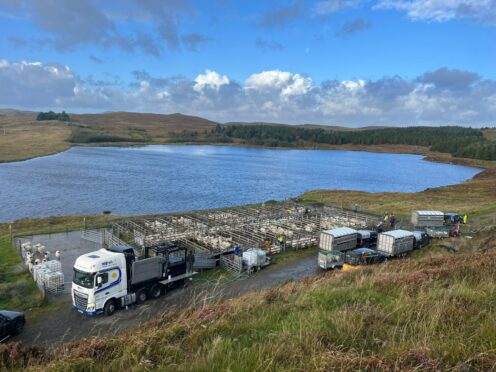Crofters from Lewis and Harris travelled to Shetland recently to learn about a scheme targeting diseases such as sheep scab which affects around 10 to 15% of UK farmers.
The disease attracts around 8,000-10,000 outbreaks a year, costing an estimated £80,000-£200,000 million in lost production and control measures.
Those who attended visited the Shetland Animal Health Scheme to see how it works and meet key personnel, with support from scientists at The James Hutton Institute and Moredun Research Institute.
The Shetland scheme was set up to help manage biosecurity around imported livestock to protect the health of cattle and sheep on the island, including keeping it free of sheep scab.
It includes veterinary surveillance and testing of all animals coming onto the island and community sheep dipping facilities.
It is hoped that aspects of the scheme could be adopted on Lewis and Harris, which hosts an estimated 30-35,000 sheep, and potentially also on other islands and rural communities.
“Sheep scab hasn’t gone away, we’re seeing it occurring throughout Scotland and tackling it is very much about working together, which is why this visit is so important,” says Dr Claire Hardy, a Hutton researcher who led the visit.
“The enthusiasm and passion of the Shetland stakeholders to control disease on their island was clear to see. The positive vibe and offers of collaboration for the future will help the Lewis and Harris islanders to build on current sheep scab interventions and move forward on disease control for Lewis and Harris.”
Lewis and Harris Sheep Producers Association chair Donald MacKinnon said the group was “very impressed” with the set up in Shetland.
“The single point of entry to Shetland provides a significant advantage over our three ports in Lewis and Harris but we still have an opportunity to try to implement a system that suits our situation,” he said.
“Getting on top of sheep scab and other diseases has obvious benefits for welfare and profitability of flocks. We were also interested to hear about the premium that it puts on stock from Shetland heading to the mainland.
“We left Shetland buzzing with ideas that we could take home and try out. One of our big challenges, that Shetland doesn’t have, is hoggs returning from wintering on the mainland.
“With hoggs due to come home soon, we will be working quickly to explore options for tackling the issue this season.”
The visitors also had a chance to talk with Shetland farmers and crofters about use of the community dipper and their experiences and plans for control of sheep scab.
Shetland Island Council Veterinary Advisor Hilary Burgess said: “We very much hope that this will be the beginning of more joint working and co-operation on sheep scab control between farmers and crofters on Shetland, and Lewis and Harris.
“We would very much welcome farmers and crofters from other islands to get involved. We are all working with the same aim to control sheep scab in our flocks and isles, and to produce quality clean sheep – so it makes sense to work together to get the best results.”
The work is funded by Expertise on Animal Disease Outbreaks (EPIC), as well as the Scottish Government funded COMBINE (Co-designing and implementing best-fit farming practices) project and Livestock Health Scotland.

